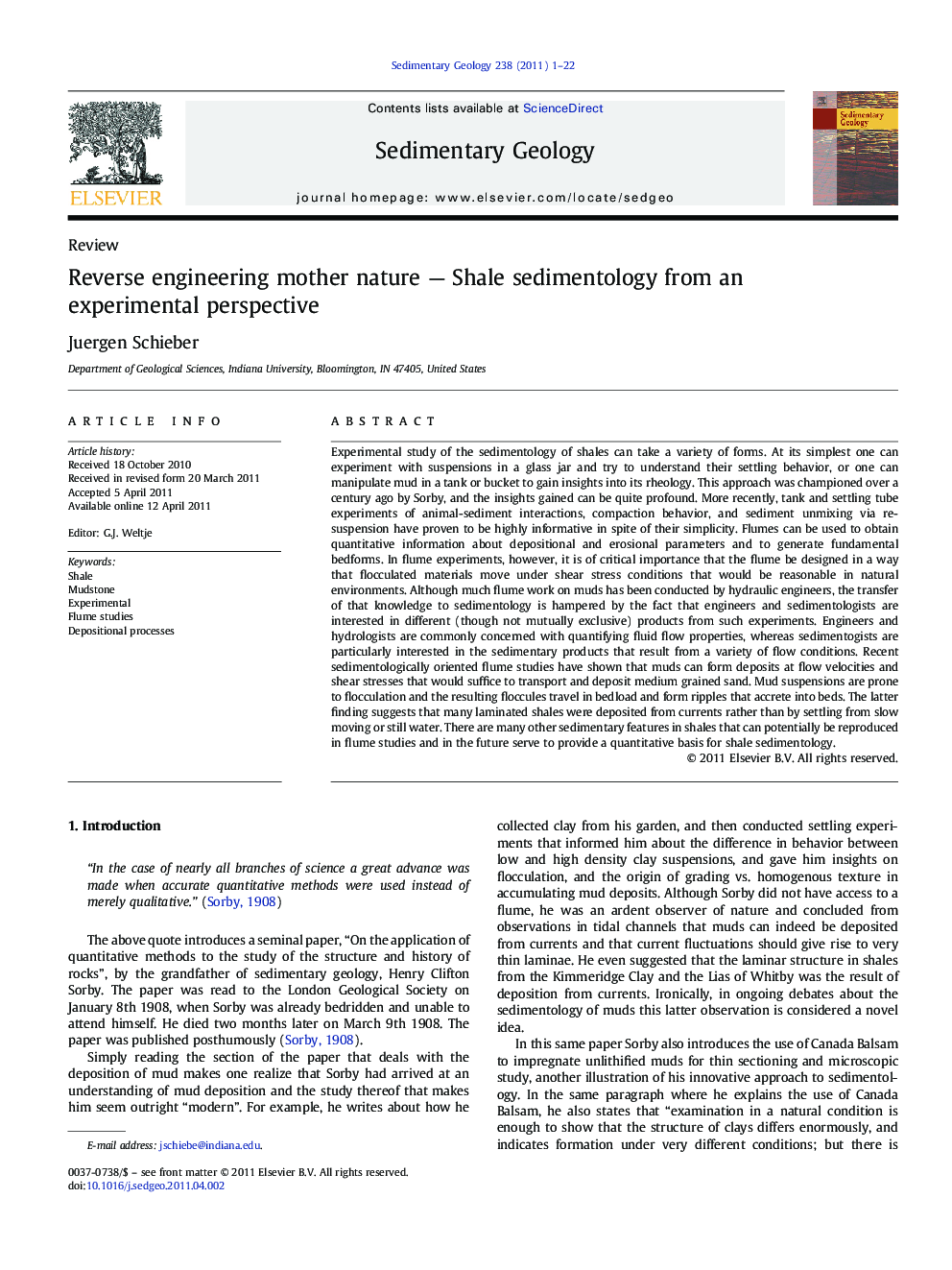| کد مقاله | کد نشریه | سال انتشار | مقاله انگلیسی | نسخه تمام متن |
|---|---|---|---|---|
| 4689998 | 1636107 | 2011 | 22 صفحه PDF | دانلود رایگان |
عنوان انگلیسی مقاله ISI
Reverse engineering mother nature - Shale sedimentology from an experimental perspective
دانلود مقاله + سفارش ترجمه
دانلود مقاله ISI انگلیسی
رایگان برای ایرانیان
کلمات کلیدی
موضوعات مرتبط
مهندسی و علوم پایه
علوم زمین و سیارات
فرآیندهای سطح زمین
پیش نمایش صفحه اول مقاله

چکیده انگلیسی
Experimental study of the sedimentology of shales can take a variety of forms. At its simplest one can experiment with suspensions in a glass jar and try to understand their settling behavior, or one can manipulate mud in a tank or bucket to gain insights into its rheology. This approach was championed over a century ago by Sorby, and the insights gained can be quite profound. More recently, tank and settling tube experiments of animal-sediment interactions, compaction behavior, and sediment unmixing via re-suspension have proven to be highly informative in spite of their simplicity. Flumes can be used to obtain quantitative information about depositional and erosional parameters and to generate fundamental bedforms. In flume experiments, however, it is of critical importance that the flume be designed in a way that flocculated materials move under shear stress conditions that would be reasonable in natural environments. Although much flume work on muds has been conducted by hydraulic engineers, the transfer of that knowledge to sedimentology is hampered by the fact that engineers and sedimentologists are interested in different (though not mutually exclusive) products from such experiments. Engineers and hydrologists are commonly concerned with quantifying fluid flow properties, whereas sedimentogists are particularly interested in the sedimentary products that result from a variety of flow conditions. Recent sedimentologically oriented flume studies have shown that muds can form deposits at flow velocities and shear stresses that would suffice to transport and deposit medium grained sand. Mud suspensions are prone to flocculation and the resulting floccules travel in bedload and form ripples that accrete into beds. The latter finding suggests that many laminated shales were deposited from currents rather than by settling from slow moving or still water. There are many other sedimentary features in shales that can potentially be reproduced in flume studies and in the future serve to provide a quantitative basis for shale sedimentology.
ناشر
Database: Elsevier - ScienceDirect (ساینس دایرکت)
Journal: Sedimentary Geology - Volume 238, Issues 1â2, 15 June 2011, Pages 1-22
Journal: Sedimentary Geology - Volume 238, Issues 1â2, 15 June 2011, Pages 1-22
نویسندگان
Juergen Schieber,